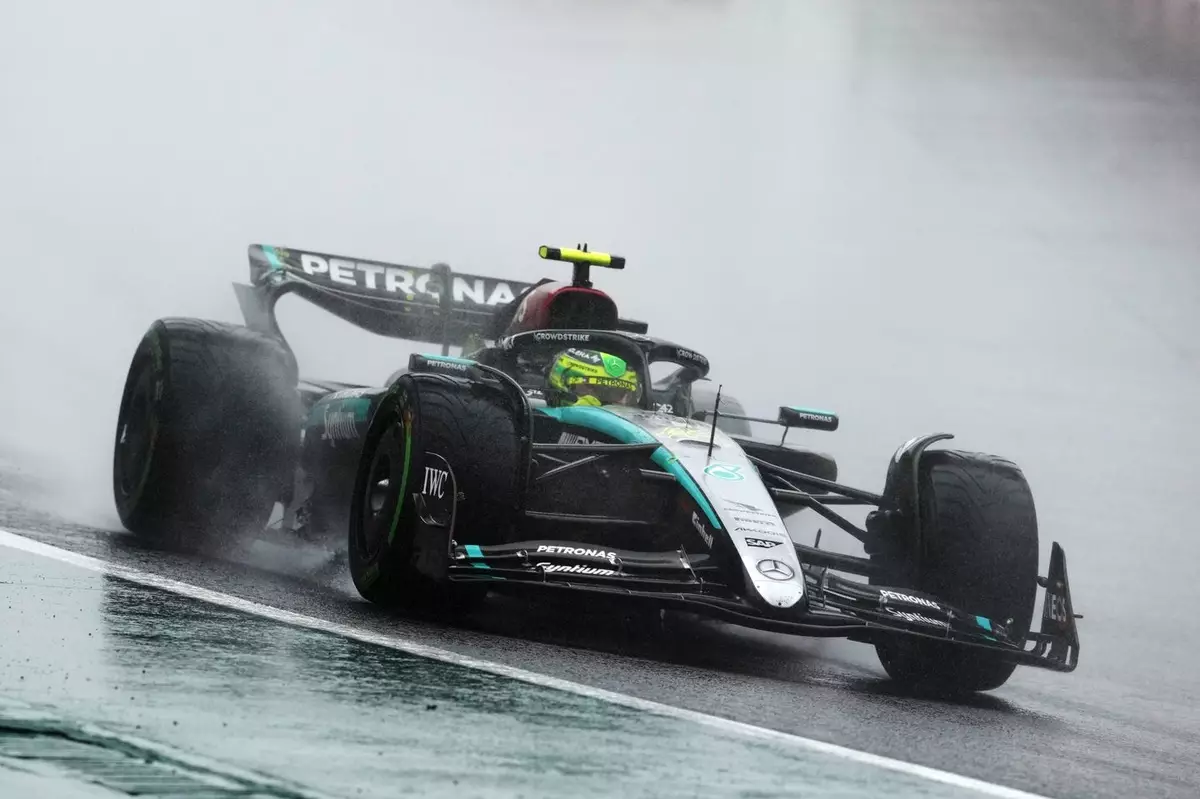Hamilton’s Transition: A Year of Reflection and Anticipation
As the 2023 Formula One season wraps up, Lewis Hamilton is eagerly looking forward to the Christmas break, a time of rest after a year full of mixed emotions. This year marks his final season with Mercedes, a team with which he’s shared nearly a decade of successes and challenges. The announcement of his upcoming switch to Ferrari in 2025 signals a significant shift in his career, setting the stage for new beginnings and fresh challenges.
Hamilton’s decision to leave Mercedes, where he has solidified his status as one of the sport’s legends, is driven by his search for new adventures. By informing team principal Toto Wolff of his commitment to Ferrari, Hamilton isn’t just making a career move; he’s declaring his relentless pursuit of excellence. Despite the impending change, he’s determined to end his tenure at Mercedes on a high note. His triumphs at the British Grand Prix and Spa-Francorchamps this season serve as a testament to his talent and determination.
Key Takeaways
- Hamilton is transitioning from Mercedes to Ferrari in 2025.
- He aims to finish strong with Mercedes despite recent challenges.
- His reflections mark a period of personal and professional growth.
The Challenges of the Season
This season hasn’t been without its hurdles for Hamilton. The latter part saw him grappling with setbacks like a disappointing retirement in Austin and underwhelming performance in São Paulo. These struggles highlighted issues not just with the car’s setup but also the unpredictable nature of racing itself. Nevertheless, Hamilton’s reflections on these challenges reveal much about his mindset as he navigates these final races with Mercedes.
Throughout these trials, Hamilton has shown remarkable maturity in his approach. He has shifted focus from obsessing over championship standings to concentrating on completing races and scoring points for his team. This change in perspective underscores a deepening sense of resilience, both personally and within the team dynamic, during this tumultuous phase.
Acknowledging Responsibility
Hamilton’s openness about the car’s performance issues underscores his sense of responsibility. Rather than deflecting blame onto others, he acknowledges that accountability lies with both himself and the team. This level of introspection likely comes from years of experience on the track and provides a grounded foundation as he prepares for his next chapter with Ferrari.

The Physical Toll
The physical demands of racing have also been challenging this season, particularly due to discomfort caused by the car’s bouncing on bumpy tracks. At times, this added strain has led to considerable back pain, as seen during the Brazilian Grand Prix. Hamilton’s determination to push through such discomfort speaks volumes about his dedication to competing at the highest level despite physical setbacks.
Inconsistencies in race performance have been another theme this year. Hamilton often found himself dealing with a car that swung between being competitive and unmanageable. His candid humor when discussing these fluctuations reflects both frustration and an acceptance of racing’s inherent unpredictability. Hamilton knows that while striving for improvement is vital, some factors remain out of his control.
Looking Forward to New Beginnings
As Hamilton anticipates the upcoming Christmas break, it’s clear he’s not only seeking rest but also looking forward to what lies ahead at Ferrari. This transition promises renewed excitement for both him and his fans as he prepares for new challenges and opportunities. The potential for rejuvenation and resurgence in performance looms large as he embarks on this transformative journey.
While Hamilton’s final season with Mercedes might not have aligned perfectly with his expectations, it has sparked a period of introspection that will undoubtedly serve him well at Ferrari. The Formula One community watches eagerly as he steps into this new chapter, confident that even amid adversity, Hamilton’s spirit and dedication remain undiminished.
Final Thoughts
In conclusion, Lewis Hamilton’s journey through this transitional year has been one marked by reflection and anticipation for what’s next. As he prepares to take on fresh challenges with Ferrari, there’s an undeniable sense of optimism about what he can achieve moving forward. His time at Mercedes may be drawing to a close, but his passion for racing continues to drive him toward future successes.
Lewis Hamilton
Formula One
Mercedes
Ferrari


Leave a Reply